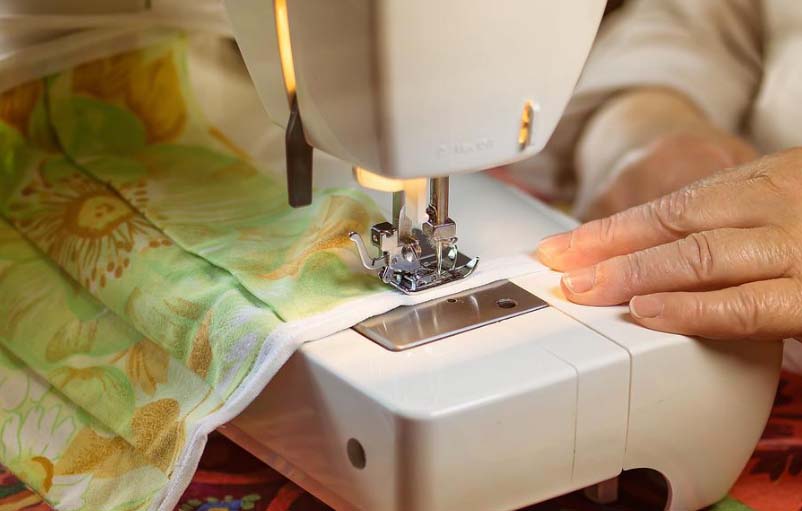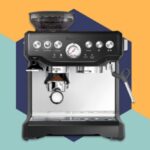Sewing machines frequently experience many of the same issues, making them predictable and frequently having established methods of repair. It is best to have your sewing machine’s manual on hand as a first resource because some issues are specific to particular models of machines and the solutions might be model- and brand-specific. These six typical issues can occur with most sewing machines, with varying degrees each.
Why Does My Sewing Machine Keep Jamming
Your Machine Is Clogged At Some Point
The thread has been threaded through the machine incorrectly, which is one of the most frequent causes of sewing machine jams. This may result in a variety of issues, such as tension problems and skipped stitches.
The Solution
If this kind of jamming happens, unthread the sewing machine, turn it off, and give the whole thing, especially the working parts, a thorough cleaning. Any lint, dust, or other particles should be removed with a small brush or by blowing them out. Additionally, for smooth performance, make sure to regularly oil the metal components of your machine.
To remove any debris from the bobbin area, use canned air. Schedule your machine’s cleaning and oiling on a monthly basis to prevent further occurrences like this, and if you sew every day, you should probably do it even more frequently.
Lack Of Tension On The Upper Thread
No matter how certain you are that the machine’s issue is most likely caused by a huge mess of tangled thread in the bobbin beneath the fabric, the lack of enough tension in the upper thread is typically what causes jamming the majority of the time. Due to the lack of tension required to pull the thread through the fabric you are sewing, this straightforward issue will cause the machine to jam.
The Solution
Depending on the project, you might need to make a decision. To properly match the hem of a pair of jeans, for example, you’ll need a heavier thread. For the best results, you might occasionally need to use cotton rather than polyester thread. To make informed decisions, beginners should become familiar with the various thread brands and thicknesses.
Poor Thread Quality
Not all threads are created equal. Be cautious when purchasing extremely cheap economy thread. Under normal tension, this thread might start to fray or break, catching on moving parts and jamming.
The majority of retail establishments that sell sewing supplies carry Coats and Clark thread. For most jobs, it is a reliable brand. Although a little is more expensive, Gutermann is a personal favorite.
The Solution
Lifting the presser foot and re-threading your needle in accordance with the manufacturer’s instructions are all that are required.
Improperly Installed Presser Foot
The presser foot holds the fabric taut while you sew. Its improper installation runs the risk of causing the fabric to move and clog the machinery. Be sure to follow the manufacturer’s instructions when installing the presser foot.
The Solution
Stop what you’re doing, carefully examine your needle for any breakage or deformities, and replace it if necessary with a new one. Make sure you are using the right kind and size of needle for the machine and the specific project, as this can occasionally be the root of the annoying jamming.
The Feed Dogs Are Not Functioning Properly
There are some machines with movable feed dogs. If the settings are off, the fabric won’t be properly pulled through, resulting in a buildup of stitches that will jam the machine. Verify that your feed dogs are activated. Watch it rise above the faceplate as you turn the handwheel.
Lint may also accumulate along portions of the feed dogs that are beneath the faceplate. Remove the faceplate to check for obstructions throughout the feed dog mechanism.
The Solution
Stop working, raise the presser foot, and thoroughly clean the fee dogs of any debris. Additionally, ensure that they are raised in a way that allows the fabric to be gripped properly. Making sure that the presser foot is not too low above the feed dogs, which is the problem that prevents the fabric from moving freely during the sewing process, is another helpful thing to try. Before returning to your project, make the necessary adjustments.
How To Thread A Sewing Machine Properly

The majority of sewing machines come with a manual that includes pictures and details on how to thread the machine. Videos and tutorials found online can be beneficial. Here is a quick rundown of the procedures needed to thread a sewing machine:
1. Wind the bobbin first. To wind the thread around the bobbin, place the empty bobbin on the spindle, hold the end of the thread, and rotate the handwheel.
2. After winding, place the bobbin inside the bobbin case.
3. Pull the thread through the take-up lever and the tension disks.
4. Pulling the thread downward and around the needle bar, continue to do so before inserting it back into the needle.
5. When the needle reaches its highest point, draw the thread up by rotating the handwheel. On the machine’s underside, you ought to see a loop of thread at this point.
6. To begin sewing, simply depress the foot pedal.
Conclusion
The issue is not resolved by using force; on the contrary, it is made worse. Precision is crucial for sewing machines to work. If something is off, it needs to be addressed before you keep going. If not, you run the risk of ruining your project, breaking needles, and harming your machine.
Have you ever been stuck in the following problems with sewing machines? Read & Learn more together!
- Why My Sewing Machine Not Making Straight Stitches – How to Adjust
- Why My Sewing Machine Skipping Stitches – How to Fix
- How to Change Sewing Machine Needle With Simple Methods
- How To Clean Your Sewing Machine With Simple Steps
- What is a Serger Sewing Machine – Everything You Should Know
- How To Hem Pants By Sewing Machine In The Easy Way
- How to Use Brother Sewing Machine – Beginner Guide 2022
- How To Use A Sewing Machine: Step-By-Step Instruction
- How To Thread A Sewing Machine: Step-By-Step Instruction











